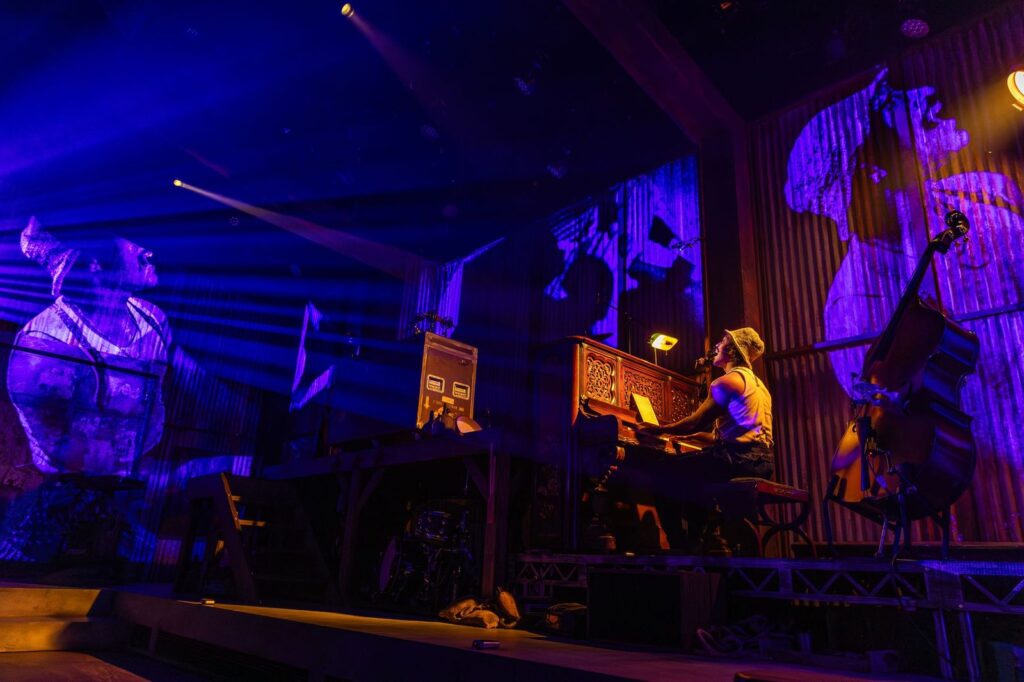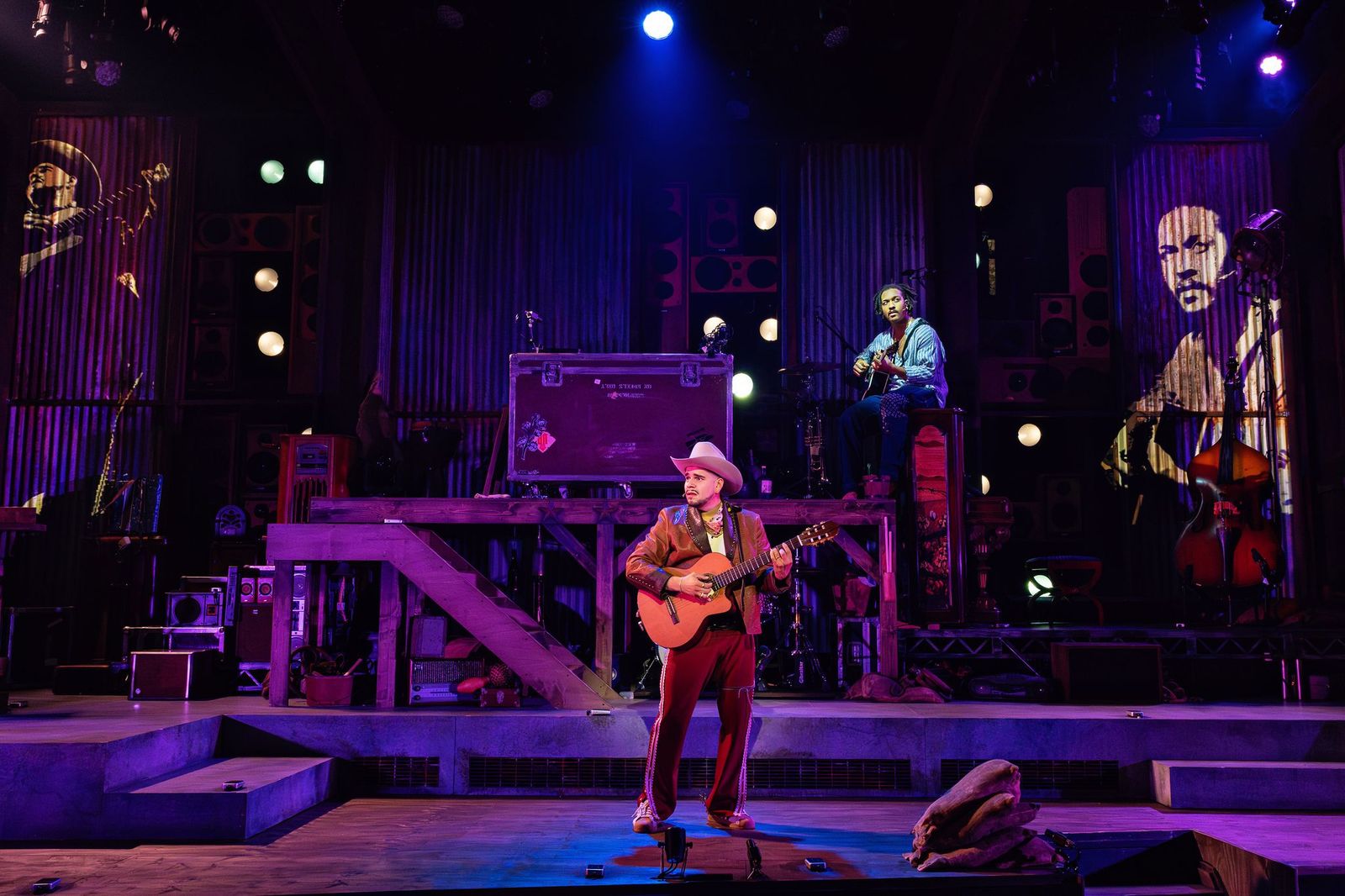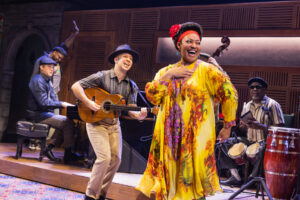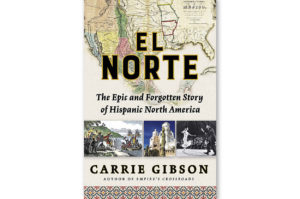In the U.S., everyone knows about the Underground Railroad, a network of abolitionists that helped slaves escape the U.S. South to find freedom in northern states and Canada. But another little-known Underground Railroad ran south, shepherding the enslaved to salvation in Mexico.
A new musical about this alternate route, Mexodus, is playing at the Audible Theater in New York City through November 1. Using layered audio looping to produce hip-hop songs live, Brian Quijada and Nygel Robinson, who wrote and star in the two-man show, breathe life into this forgotten story and seek to reframe U.S. history in the process.
If it sounds a bit like the Broadway smash hit Hamilton… well, Quijada and Robinson readily welcome the comparison. But whereas Hamilton sought to democratize and radicalize the well-worn stories of the U.S. “Founding Fathers” by recasting them and their sound, Mexodus’s goal is to shift the focus of historical narratives, claim new protagonists, and remind the audience of the value of migration and solidarity.
It’s no easy task, and the show is burdened by the sheer volume of history it must tell to make its point. In the opening number, Quijada and Robinson rap as themselves—the pair would be the world’s coolest history teachers—about Mexico’s colonization, independence, manumission, and war with America. With dates and facts flying fast, the challenge for the audience throughout the bilingual show becomes clear: Can you keep up? This is no easy tarea.

Soon, though, Mexodus shifts from the hip-hop classroom to Victoria, Texas. Victoria was once part of Mexico, which abolished slavery in 1829, long before the U.S. did. But when Texas became its own republic in 1836, slavery returned to the town. In Victoria, we meet Henry, a fictional character played by Robinson, who has been severed from his family in Kentucky and relocated south to serve another master.
After an incident at the new plantation, Henry must flee, and, having heard about the lack of slavery in Mexico by word of mouth, he decides to buck Harriet Tubman’s famous route north and walk with the North Star behind him. His “Mexodus” has begun.
Across the Rio Grande, Henry winds up on the farm of Carlos, played by Quijada, a former medic in the Mexican American War who abandoned his battalion and now struggles as a tenant farmer.
Quijada and Robinson, both effusive and electric performers, bring deep emotion to the tale of Carlos and Henry’s relationship. The audience watches as the two carefully build trust through their commonalities. Both men are looking for companionship and healing from the wounds of their past, and they share a rage against U.S. greed. Their bond develops as they work to maintain Carlos’ farm. In the unforgiving environment of la frontera, it’s not man versus nature, but men versus nature.Working, sharing, and surviving, Carlos and Henry come to understand how their freedom is intertwined.
Carlos and Henry are composite characters, sewn from true stories from the historical record. In this way, Mexodus puts a spotlight on the interpersonal dynamics between Black and Mexican people during this period and the potential for solidarity. As they announce in a “newfound manifesto,” “Todos estamos juntos en esto”: “We’re all in this together.”
Parable to the present
The inspirational friendship of Henry and Carlos comes at the expense of historical specificity about the Underground Railroad to Mexico. More information about the phenomenon comes in the song “Henry 2 Enrique,” in which Carlos instructs Henry on how to leave the dangerous frontera region, continue his route into Mexico, and assume a new identity. In rapid lyrics, Carlos presents his compadre with options to continue down the railroad, which include traversing the Spanish roads, working with natives, or taking a chance with fur traders.
It’s a scant explanation, though this may not be the fault of Quijada and Robinson. The historical record about the route is thin, and scholarship is just beginning to build it out. Mexodus wagers that exposing audiences to this episode, even in general terms, will remind them of the two-way flow of the border and the intertwined histories of the U.S. and Mexico.
Mexodus is perhaps most interested in this history as a parable for our present moment. In the finale, Quijada and Robinson rap, “But liberation in this nation is still being confronted/ when Black and Brown bodies continue being hunted.” With Immigration and Customs Enforcement (ICE) performing increasingly intense, indiscriminate, and brutal raids on minority communities in the U.S., Mexodus doesn’t have to do much lifting to illuminate historical parallels.
In fact, the recurrence of the past is an argument Mexodus makes directly in its sound. The musical employs looping, a technique whereby lines of music are recorded live at the start of each song and then layered on top of each other to create orchestration.
Musical lines, like bits of history, may fade into the background, but they can shape a song long after they are first played. Mexodus makes them worthwhile to hear.










